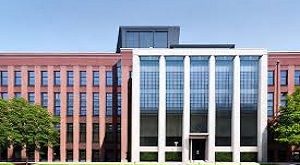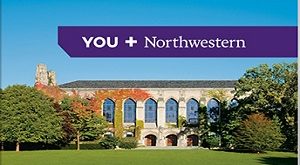Introduction
The University of Technology Sydney (UTS) has established itself as a prominent institution in the realm of higher education, recognized for its commitment to fostering innovation, research, and real-world engagement. Located in the vibrant city of Sydney, Australia, UTS has become a hub for diverse academic programs and a breeding ground for the next generation of leaders and thinkers. This article will delve into the rich history, academic offerings, research initiatives, campus life, and future aspirations of UTS, painting a comprehensive picture of what makes this university a standout institution.
1. Historical Overview
1.1 Founding and Development
The origins of UTS can be traced back to the late 19th century when several technical institutions were established in Sydney. In 1964, the Sydney Technical College became the Institute of Technology, marking a significant shift toward higher education. By 1988, it achieved university status and was renamed the University of Technology Sydney.
1.2 Growth and Transformation
Throughout the years, UTS has undergone substantial growth and transformation. The university expanded its campus, diversified its academic programs, and embraced a global perspective. UTS has continually adapted to meet the needs of students and the workforce, establishing itself as a leader in technology and applied research.
2. Academic Programs and Offerings
2.1 Faculties and Schools
UTS comprises several faculties and schools, each offering a wide range of undergraduate and postgraduate programs. These include:
- Faculty of Arts and Social Sciences: Offering degrees in humanities, social sciences, and communication, focusing on critical thinking and creativity.
- Faculty of Business: Known for its strong emphasis on practical experience and global business education, providing programs in management, marketing, finance, and entrepreneurship.
- Faculty of Engineering and Information Technology: Offering cutting-edge programs in engineering disciplines and information technology, emphasizing innovation and research.
- Faculty of Law: Providing a comprehensive legal education, with a focus on social justice and public interest law.
- Faculty of Design, Architecture, and Building: Fostering creativity and innovation in design, architecture, and urban planning.
2.2 Interdisciplinary Programs
UTS encourages interdisciplinary collaboration, allowing students to engage in programs that combine different fields of study. This approach fosters creativity and innovation, preparing graduates for the complexities of the modern workforce.
3. Research and Innovation
3.1 Research Excellence
UTS is recognized for its research excellence, classified as a Research Intensive University. The university focuses on addressing global challenges through innovative research initiatives. Key research areas include:
- Sustainability: UTS conducts research aimed at promoting sustainable practices and technologies across various sectors.
- Health and Wellbeing: Research initiatives focus on improving health outcomes and addressing public health challenges.
- Digital Innovation: UTS explores the implications of digital technologies on society, business, and education.
3.2 Research Centres and Institutes
UTS hosts several research centres and institutes that drive innovation and collaboration. Notable centres include:
- Centre for Health Services Management: Engaging in research to improve health service delivery and policy.
- Institute for Sustainable Futures: Conducting research on sustainability practices and promoting social and environmental justice.
- Data Science Research Group: Focusing on data analytics and its applications across various industries.
4. Campus Life
4.1 Student Experience
The student experience at UTS is enriched by a diverse and inclusive campus environment. With over 45,000 students from more than 120 countries, UTS fosters a vibrant community that celebrates cultural diversity.
4.2 Student Organizations and Activities
UTS offers numerous student organizations and extracurricular activities that enhance campus life. Students can engage in academic clubs, cultural societies, and sports teams, fostering a sense of community and belonging.
4.3 Facilities and Resources
The UTS campus features modern facilities, including state-of-the-art classrooms, laboratories, libraries, and recreational areas. The UTS Library provides access to a vast collection of resources, study spaces, and digital services to support student learning.
5. Industry Engagement and Practical Learning
5.1 Work-Integrated Learning
UTS emphasizes work-integrated learning, providing students with opportunities to gain practical experience through internships, placements, and industry partnerships. This approach equips graduates with the skills and knowledge needed to succeed in the workforce.
5.2 Industry Partnerships
The university collaborates with various industries and organizations, fostering partnerships that enhance research and educational opportunities. These partnerships facilitate knowledge transfer and innovation, bridging the gap between academia and industry.
6. Internationalization
6.1 Global Partnerships
UTS has established strong global partnerships with universities and institutions worldwide. These collaborations promote academic exchange, joint research initiatives, and international study opportunities for students.
6.2 Study Abroad Programs
The university offers a range of study abroad programs, allowing students to experience different cultures and educational systems. These programs enhance global awareness and foster intercultural competencies among graduates.
7. Community Engagement and Social Responsibility
7.1 Commitment to Social Impact
UTS is dedicated to making a positive impact on society through community engagement and social responsibility initiatives. The university encourages students and faculty to participate in projects that address social issues and contribute to community development.
7.2 Outreach Programs
UTS engages in various outreach programs that promote education and support underrepresented communities. These initiatives aim to increase access to education and empower individuals through skill development and knowledge sharing.
8. Alumni Network and Success
8.1 Prominent Alumni
The University of Technology Sydney has produced numerous successful alumni who have made significant contributions across various fields. Notable graduates include:
- Michael Woolley: A leading entrepreneur and CEO of a successful tech startup.
- Rita Saffioti: A prominent politician and member of the Western Australian Parliament.
- Dr. John McDonald: An influential researcher and expert in sustainable energy solutions.
8.2 Alumni Support and Engagement
UTS maintains a strong alumni network, providing support and resources for graduates. The university’s alumni association offers career services, networking opportunities, and events that foster connections among alumni.
9. Challenges and Opportunities
9.1 Financial Sustainability
Like many educational institutions, UTS faces challenges related to financial sustainability. Funding constraints and changing demographics impact enrollment and revenue generation. The university is actively exploring innovative funding models and partnerships to ensure its continued success.
9.2 Adapting to Changing Educational Landscapes
The higher education landscape is evolving rapidly, with increasing competition and changing student needs. UTS is committed to adapting its academic programs and services to meet the demands of today’s students, including the integration of technology and online learning options.
10. Future Aspirations
10.1 Strategic Vision for the Future
The University of Technology Sydney is developing a strategic vision that focuses on key priorities, including enhancing academic excellence, promoting research innovation, and strengthening community partnerships. The university aims to position itself as a leader in higher education and research.
10.2 Commitment to Diversity and Inclusion
UTS is dedicated to promoting diversity and inclusion on campus, creating an environment where all students feel valued and supported. Initiatives aimed at increasing diversity among students, faculty, and staff are integral to the university’s mission.
Conclusion
The University of Technology Sydney stands as a beacon of innovation, academic excellence, and community engagement. With a rich history, diverse academic offerings, and a commitment to addressing global challenges, UTS continues to shape the future of higher education. As it embraces new opportunities and navigates challenges, the university remains focused on empowering students to become leaders in their fields and make a positive impact on society. The journey of UTS is a testament to the power of education in transforming lives and communities, and its future is poised for continued growth and success.


